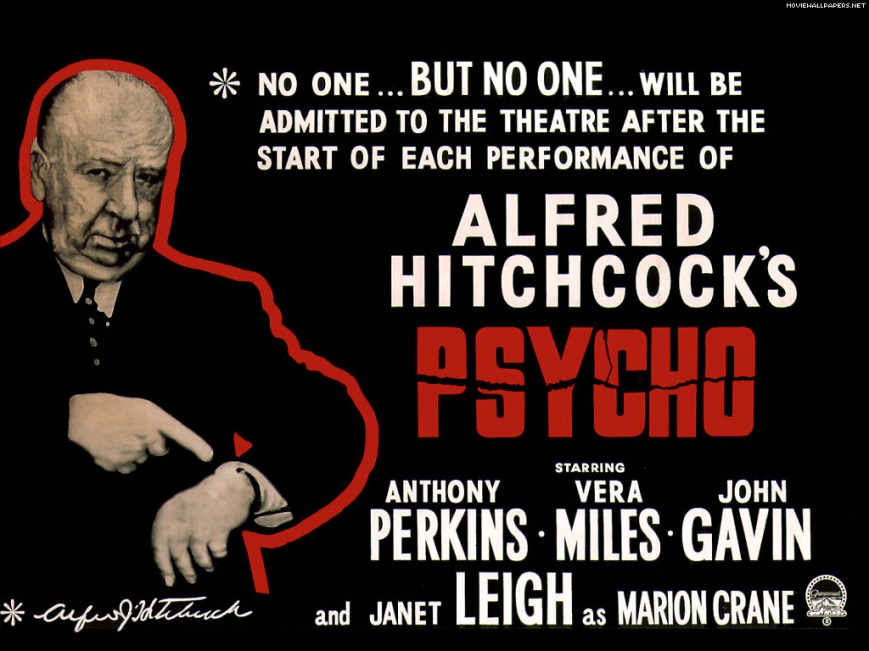1960’s PSYCHO
Where viewed: DVD, TV, couch.
Experience with film: This film has been in my consciousness since I was like six and my dad claimed that he and my sister stayed at the Bates Motel on a trip to South Carolina. Oh boy I love Hitchcock. The first movie I saw on the big screen at the Normal Theater was VERTIGO when I was 10. Saw a raft of Hitchcock classics there, including PSYCHO. Seen it on TV a few times. Saw the Gus Van Zant “remake” at some point as well too.
Writer: Joseph Stefano
Director: Alfred Hitchcock
Principal Actors: Anthony Perkins, Vera Miles, Janet Leigh
There’s so much to talk about with PSYCHO. Minor shit like Anthony Hopkins’s junky turn as the Master of Suspense in 2012’s HITCHCOCK and the rumor that this is first film to feature a flushing toilet in America. From major shit like the introduction of this level of sex and violence in mainstream American film (how tame it all looks now). Bernard Herrmann’s incredible score. Killing the “star” halfway through. But on this viewing, what stood out most was the overall pacing of the movie, particularly the difference between the number of cuts during typical scenes overall versus the number of cuts in the famous shower scene. Compared to what we’re used to as movie-goers today, the bulk of PSYCHO moves at a creeping pace shot-wise. Hitchcock is content to let his camera run unblinking during conversations, while people are driving, while vehicles are moving in and out of locations. I can’t pull up any specific data on the movie as a whole (although there is a website devoted to Average Shot Length in movies that is initially not-real-helpful). But there are far fewer cuts than most movies today, especially the disorienting SFX-centered contemporary actioners. But it speeds up significantly during that shower scene. In hindsight, it’s easily to discern why there are so many cuts in this scene. It provides a visual accompaniment to the shrieking violin score. It gives Hitch the ability to create a scene of great violence without any actual violence by providing enough visual information that your brain fills in the punctures and viscera on its own. Smoke and mirrors. It’s a jagged, unsettling stretch of hyperactive film. It works. Choose your reason. But that scene represents a huge spike in camera activity in the film–reportedly 78 camera set-ups and seven days to film. And it’s not like the rest of the film. Contrast it with this scene of Arbogast’s murder. These shaggy, longish shots build tension, but they don’t release it in a frenzy like the shower scene. They’re staid by comparison, less frenetic. Less of a shock to the system. Less of a look into the future.
